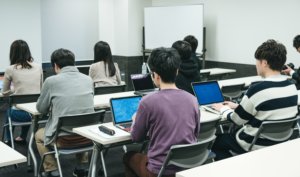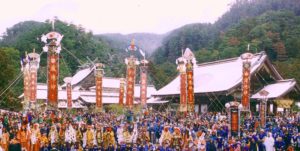What Is Division System?
CONTENTS
- Konosuke Matsushita: Vitalizing the Division System (divisional system)
- How the division system got started
- Energizing employees
- Are you enjoying your work?
- Growing in strength through specialization
- Sell your products through your own efforts
- Love to Manage
- Listen Well, Praise Often
- The Division System Drives Growth
- Tsuga: The potential of Panasonic is enormous
Konosuke Matsushita: Vitalizing the Division System (divisional system)
By M. Emi
The Konosuke Matsushita Museum (Osaka, Japan) is currently presenting a special exhibition entitled "Konosuke Matsushita: Vitalizing the Division System", which will be available to the public until June 29, 2013.
“This is one of the major exhibitions at the Konosuke Matsushita Museum in 2013. This special exhibition in English and Japanese profiles how Konosuke Matsushita, the founder of Panasonic, vitalized his organizations and employees. It presents a selection of his words to Panasonic employees, and the approaches he used, to enable them to work with energy and vitality,” said Atsuko Suzuki, director of the Konosuke Matsushita Museum. “Through his own words and anecdotes, visitors will experience the way Konosuke tapped into the wisdom and ideas of every employee by keeping their morale high under the division system.”
How the division system got started

How did Konosuke create the division system? The very origin of his idea of organizing a company into divisions can be traced back to his early twenties. In 1910, at the age of 15, he had joined the Osaka Electric Light Company. He worked as a wiring assistant, under close supervision and with very strict hours. At 22, he was promoted to installation technician. Working outside the company as a supervisor, he felt indescribably free and relaxed. In a January 1962 issue of Jitsugyo no nihon magazine, Konosuke recalled:
I realized then that nothing is better than being left free to do your work on your own. That is what led me to set up the division system based on the idea of autonomous responsible management….
Whether the job is just the work of one person or the operation of an entire enterprise, being left to decide things on your own volition and initiative gives a person a real sense of fulfillment in life. And that sense of fulfillment is the most important thing in life.
At the age of 23, Konosuke founded Panasonic (then Matsushita Electric). The tiny workshop he started with his wife and brother-in-law grew rapidly. By 1933, the number of employees reached nearly 3,000. Then he applied his past experience to the management of his own company. He organized the company by product into three divisions. Each division became a self-supporting entity with its own factories and sales offices, assuming responsibility for all aspects of business from product development and manufacturing to sales. Each division was responsible for its own accounts, and there was no balancing of profit and loss among the divisions. They functioned as independent companies.
It is said that the introduction of the division system quite early in the company’s history was a driving force in the growth of Panasonic. Segmenting the company into divisions made it easier for employees to see the results of their work, and taught them to apply a manager's viewpoint to even the smallest tasks. Panasonic maintained its vitality and made maximum use of its employees' potential, enabling it to develop into a large global corporation during the course of the founder’s life.
Konosuke Matsushita passed away in 1989.
In the early 2000s, Panasonic changed course and dismantled the division system in favor of a more centralized direction and economy of scale. This centralized organization, called the “business domain system”, at first proved effective for the company to return to profitability. The organization, however, gradually became lax and began to lose dynamism. To overcome the problems the company was facing, Kazuo Tsuga was appointed as the new president last June.
Energizing employees
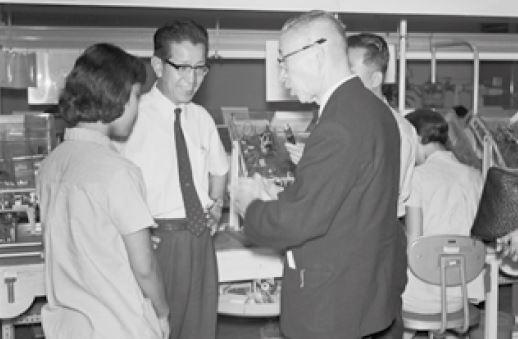
“With our previous business domain system, individual business units (BU) found it rather difficult to take the initiative in their activities. Some BUs were active, but some were not. Talking to people in the BUs which have not been active, I rather sense from their remarks that they are doing their work out of obligation. They want to work more closely with customers, but they feel like small cogs in a large organization.”
So said Tsuga in a video interview which is being shown at the current special exhibition.
“How can we change our organization so we will feel more motivated in our work?
Our founder created a division system in order to encourage “autonomous responsible management.” My motto is, “Be willing to take responsibility.” These two are the same. In order to revitalize Panasonic, we restored the division system, putting in place 49 business divisions under four companies. Greater visibility and a sense of being rewarded for a job well done will revitalize the organization, encourage constructive competition and collaboration, and benefit the entire company. Such a simple approach is necessary to bring new life to our company. To put it another way, a bottom-up approach in management is what I have in mind.
We want to restore Panasonic’s vitality by promoting a spirit in each of us to act as “employee entrepreneurs,” empowering us as individuals, and creating an environment where everyone can fulfill their potential and see the results of their efforts.”
Tsuga reinstituted the division system from April 1,2013.
Are you enjoying your work?
The exhibit tour begins with the following prologue, a message Konosuke delivered to his employees in 1939.
“What most occupies my thoughts now is whether or not all of you are enjoying your daily work. I would like each of you to enjoy the work you do every day.”
Masako Nakanishi, a curator who organized the exhibition, says the founder wanted all his employees to work each day with energy, and with a sense of meaning and purpose in their lives, and he was convinced that this would lead to personal growth and, as a result, to the growth of Panasonic.
Growing in strength through specialization
Part 1 of the exhibition shows a video of Konosuke’s speech to the division managers recorded in 1973.
Generally, a growing enterprise loses strength. To assume that a company strengthens with growth is a gross misunderstanding. The smaller the enterprise, the more reliably it can perform its work. But as it grows, parts of it weaken. Even the mentoring spirit begins to wane. Matsushita Electric has also become a corporate entity of a significant size.
I have long said that we will only grow weaker as an organization unless we push ahead with specialization and segmentation. A business of a hundred people may perform well, but if it is to do the same with a thousand people, it must be divided into ten segments. Only then is it possible to manage the enterprise with the same leadership capabilities. I concluded that unless we moved toward specialization, our business would not be viable.
Konosuke believed that as companies grow, they gradually become bureaucratic and hidebound. Inevitably, it becomes difficult to approach work with an open, flexible mind. Konosuke wanted his employees to work in an unfettered environment.
At the 1970 management policy meeting, Konosuke spoke: "You can talk to me directly."
I have often told our employees, “If you notice something, you don’t have to tell your boss. Go right ahead and tell your boss’s boss. You can notify your boss about it later. That will speed up communication in the organization. If it’s urgent, tell your boss’s boss, or go two levels up and tell his boss, or even tell me.”
By promoting open communication, we have created an environment where everyone can work with an open and flexible mind, and I believe it allows us to work without feeling that we are limiting each other’s potential.
Sell your products through your own efforts
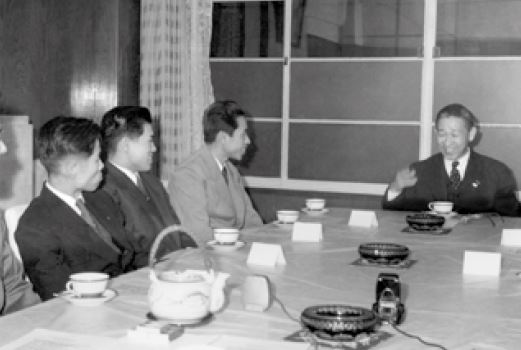
A display panel in Part 2 introduces Konosuke’s talk at the Summer Management Seminar in July 1980:
I want all of you division heads to personally visit customers, or designate someone to do it for you. Whatever you make, you should experience selling with your own hands. Furthermore, you must make sure everyone in your division absorbs this principle. This will enable them to make the most of their potential, and the power you can mobilize in this way is limitless.
Another display panel in Part 2 explains how earnestly Konosuke focused on customers.
One episode, entitled “Sell Your Products through Your Own Efforts”, explains how earnestly Konosuke focused on customers. When he first started his own business, he would get on the 8 o’clock night train from Osaka, arrive in Tokyo in the morning, and spend the day making the rounds, visiting his customers. He negotiated prices, briefed them on his products, and made all the necessary decisions related to Panasonic’s business. Then he returned on the night train. He slept on the train both ways. He wasn’t very strong, and in fact sometimes his health was quite poor, but he never missed a trip in three years. As a result, he gained some important customers in Tokyo. They became very familiar with him, and his products sold well in Tokyo. If he hadn’t made that kind of effort, he later thought, his company could not have achieved the success that it did.
Konosuke said that the same sort of approach is necessary for each division head. If they do this, they can sell anything. They’ll be able to manufacture products that sell. Their job would be simple if they could sell products while sitting at their desk. But even if a product does sell initially, eventually sales will fall. Or they will be unable to create anything new.
Konosuke recalled when he visited his customers, they would say to him, “Mr. Matsushita, you should make such-and-such a product. Otherwise, you’ll be left behind.” Konosuke always listened carefully to his customers’ suggestions. Every month, he would return to Osaka with ideas for new products.
Love to Manage
In Part 3 of the exhibition, Konosuke talks about the essentials of leadership. In part of his two-hour speech in December,1972 he said:
Simply put, to manage a division, you must love to manage. It must be something you are curious about. Without a love for management, you cannot become adept at it. You will also not be able to develop your people, and your business performance will not improve.
If I ask myself the same question, I realize that I still find meaning in managing Matsushita Electric. I enjoy it. That is why I can speak to you in this way.
Listen Well, Praise Often
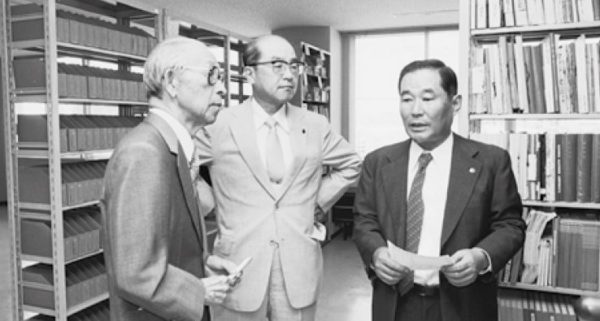
Part 3 also presents a selection of insights from senior managers who were mentored by Konosuke.
Mr. Toshihiko Yamashita (1919 – 2012), former president of Matsushita Electric, wrote in a 1980 issue of Matsushita Konosuke Kenkyu.
“Konosuke was a skilled listener.Even when we made a mistake the founder always listened to our side of the story. However, when I became president, I discovered how difficult this is. When you are very busy, it can be irritating to listen to a long, complex explanation, and you tend to end up saying “get to the point, ” Yamashita recalled. “The founder, however, never did that. No matter how busy he was, he would listen until you were finished. Moreover, the founder treated everyone just the same, regardless of age or level of education. He listened to everyone, and everyone who met him went away feeling satisfied. His ability to listen was not some sort of technique he practiced on others. It came from a genuine interest in hearing what they had to say. “
The Division System Drives Growth
Morimasa Ogawa talks about the concept autonomous responsible management that he learned from Konosuke. Ogawa joined Matsushita Electric in 1955 and managed the microwave oven division before being appointed president of Matsushita Housing Products Co., Ltd. (current Panasonic Appliances Company) in 1982.
In 1994, he lectured the division heads about “Thoughts on Matsushita Management” at the Education and Training Center (today’s Human Resources Development Company) in Hirakata. Here are some excerpts from that talk:
The division system is the foundation of Konosuke Matsushita’s management strategy. It has been the driver of Matsushita’s growth, and if the company is to grow and flourish in the future, I believe it will be because of the division system,
Each division is an independent company, and each division head is a company president. A capacity to formulate strategy and a firm commitment to autonomous responsible management are essential requirements for today’s company presidents.
I think many people assume that autonomous responsible management means that a manager should take responsibility for everything, but no manager could possibly do that. The responsibility that a top manager assumes is the final responsibility.
Tsuga: The potential of Panasonic is enormous
This exhibition tour concludes with a video of an interview with President Tsuga, which was recorded April 2013.
On many occasions, I have been saying that it is important that we all work hard to address customer needs. In fact, it is the most important thing that we should all keep in mind. First of all, I want all of our employees to ask themselves whether they are really trying to meet customer needs.
There are very high expectations for Panasonic. The potential of Panasonic is also enormous. It would be a shame if we failed to seize this opportunity. We are a company of excellent people, and I urge everyone to strive forward filled with energy.
I believe Panasonic’s situation is improving in many ways. If you do not feel this happening now, please go to your customers. There you will surely gain insight. When in doubt, reach out to your customers. They will help you find the way.
President Tsuga hopes that by keeping their product lines responsive to customers’ needs Panasonic will once again become a dynamic organization. What we have described here is only a limited part of the exhibition. The exhibition also extends to displays of historically popular products. Visiting the special exhibition will surely energize and vitalize you and your work place.

